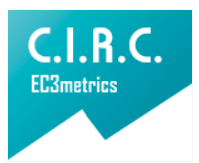Management oropharyngeal during tracheal intubation (IOT). Systematic review
Manejo orofaríngeo durante la intubación orotraqueal (IOT). Revisión sistemática
Main Article Content
The management oropharyngeal during IOT is a little procedure documented in the interdisciplinary group of management of intensive care units, reflecting poor empirical actions with scientific bases affecting the timely and quality care for this population. The aim of this review is To analyze the findings of the evidence on swallowing and oral motor operation during the IOT. For this We conducted a systematic search of studies published between 1 January 2000 to October 1, 2009, in the databases Pubmed, Medline, Hinari, and Science Direct. We performed a critical analysis, slight evidence did not do statistical analysis The results show approximately 150 articles in databases such as Pubmed (248) Hinari (176) Medline (518) and Science Direct (150), 80% of these cross-database. Publications were selected to include only adult patients manage swallowing during the IOT, only two studies met with this parameter. The evidence makes use of protocols during the IOT, initial oropharyngeal assessment to predict success or failure of extubation process and to minimize stimulation preventive effects oropharyngeal swallowing post extubation This research highlights the scarcity of research in the oropharyngeal rehabilitative and preventive management during the IOT and calls for research in the area to generate agreements based on scientific evidence, ensuring quality interdisciplinary actions in handling Patients with this condition.
Downloads
Publication Facts
Reviewer profiles N/A
Author statements
Indexed in
- Academic society
- Bogotá: Corporación Universitaria Iberoamericana
- Publisher
- Bogotá: Corporación Universitaria Iberoamericana
Article Details
Ajemian M. S., Nirmul G. B., Anderson M. T., Zirlen D. M. & Kwasnik E. M. (2001). Routine Fiberoptic Endoscopic Evaluation of Swallowing Following Prolonged Intubation
Implications for Management. Department of Surgery, Waterbury Hospital Health Center, Waterbury, Conn. Arch Surg,136,434-437.
Amantéa S.L., Piva J.P., Sanches P.R. & Palombini B.C. (2004). Oropharyngeal aspiration in pediatric patients with endotracheal intubation. Pediatr Crit Care Med, 5 (2),152-6.
Ali E.S., Mifue O., Abid B, & Celestino P.(2003). Swallowing disorders post orotracheal intubation in the elderly. Intensive Care Medicine, 29 (9) 2003.
Baumgartner C., Bewyer E. & Bruner D. (2008) Management of Communication and Swallowing in Intensive Care The Role of the Speech Pathologist. AACN Advanced Critical Care, 19 (4), 433–443.
Barquist E., Brown M. Cohn S., Lundy D. & Jackowski J. (2001).Postextubation fiberoptic endoscopic evaluation of swallowing after prolonged endotracheal intubation: A randomized, prospective trial. Critical Care Medicine, 29 (9), 1710-1713.
Barker J., Martino R., Reichardt B., Hickey E. J. & Ralph-Edwards A.(2009) Incidence and impact of dysphagia in patients receiving
prolonged endotracheal intubation after cardiac surgery. Department of Speech - Language Pathology, Toronto General Hospital. Can J Surg, 52(2), 119–124.
Chang H.H., Kyoung H.C., Yoon S.K. & Chae M.L.(2007). Pre-emptive swallowing stimulation in long-term intubated patient.
Clin Rehabil, 21, 41. The online version of this article can be found at: http://cre.sagepub. com/cgi/content/abstract/21/1/41.
Colonel P., Houzé M. H., Vert H., Mateo J., Mégarbane B. & Tolédano D.G.-,et al.(2008). Swallowing Disorders as a Predictor of Unsuccessful
Extubation: A Clinical Evaluation. Am J Crit Care. American Association of Critical-Care Nurses, 17, 504-510. Published online http://www.ajcconline.org.
DeVita MA. & Spierer-Rundback L. (1990) Swallowing disorders in patients with prolonged orotracheal intubation or tracheostomy
tubes. Department of Anesthesia/ Critical Care Medicine, University of Pittsburgh Medical Center, PA. Crit Care Med, 18(12),1328-30.
Domingez L., y Gómez G. (2004). Trastornos de la deglución en el paciente en estado crítico. Residente IV año Cirugía General. Hospital
Universitario San Ignacio. Pontificia Universidad Javeriana. Bogotá, Colombia. Lecturas sobre nutrición no 46 lecturas sobre nutrición, (3). 55-71.
Heffner J.E. (2010).Swallowing complications after endotracheal extubation: moving from “whether” to “how”. Chest, 137(3), 509-10.
Holinger L. D. & Benjamin B. (2008) Laryngeal Complications of Endotracheal Intubation. Annals of Otology, Rhinology &Laryngology.
Kim M.H., & Kim M.Y. (2007). The effects of swallowing with oropharyngeal sensory stimulation in nasogastric tube insertion
in stroke patients. Department of Nursing, College of Nursing, Pusan National University, Korea. Taehan Kanho Hakhoe Chi, 37(4), 558-67.
Laborde M. (2004, Junio). Medida de la Saturación de Oxígeno por Medio Optico, XIII Seminario de Ingeniería Biomédica Facultades de Medicina e Ingeniería Universidad de la República Oriental del Uruguay Montevideo.
Leder S.B., Cohn S.M. & Moller B.A.(1998). Fiberoptic endoscopic documentation of the high incidence of aspiration following extubation in critically ill trauma patients.
Yale University School of Medicine, Department of Surgery, Section of Otolaryngology, Communication Disorders Center, New Haven 06504, Connecticut, USA. Dysphagia, 13(4), 208-12.
Megarbane B., Be Hong T., Kania R., Herman P. & Baud FJ. (2010). Early laryngeal injury and complications because of endotracheal intubation in acutely poisoned patients:
a prospective observational study. Department of Toxicological and Medical Critical Care, Lariboisière Hospital, Paris- Diderot University, France. Clin Toxicol (Phila), 48(4), 331-336.
Partik B., Pokieser P., Schima W., Schober E., Stadler A., Eisenhuber E., Denk D. & Lechner G. (2000). Videofluoroscopy of Swallowing in Symptomatic Patients Who
Have Undergone Long-Term Intubation. Department of Radiology and of Otorhinolaryngology, University of Vienna, 174, 1409-1412.
Ronald Y.C., Simon E. (2009). Dysphagia After Emergency Intubation: Case Report andLiterature Review. Springer New York, 24, (1) 105-8.
Terré R., Mearin F. (2006). Oropharyngeal dysphagia after the acute phase of stroke: predictors of aspiration. Unit of Functional Digestive Rehabilitation, Neurorehabilitation Hospital, Institut Guttmann, Badalona, Spain. , 18(3),200-5.
Tolep K., Getch C.L., Criner G.J. (1996). Swallowing dysfunction in patients receiving prolonged mechanical ventilation. Department of Medicine, Temple University School of Medicine, Philadelphia. USA,109(1),167-72.
Skoretz S.A., Flowers H.L., Martino R.(2010). The incidence of dysphagia following endotracheal intubation: a systematic review. Department of Speech-language Pathology, University of Toronto, Toronto, Canada Chest, 137(3), 665-73.
Wang T.G., Wu M.C., Chang Y.C., Hsiao TY., Lien I.N.(2006).The effect of nasogastric tubes on swallowing function in persons with dysphagia following stroke. Department of Physical Medicine and Rehabilitation,
National Taiwan University Hospital, and School of Medicine, National Taiwan University, Taipei, Taiwan Arch Phys Med Rehabil, 87(9), 1270-3.












